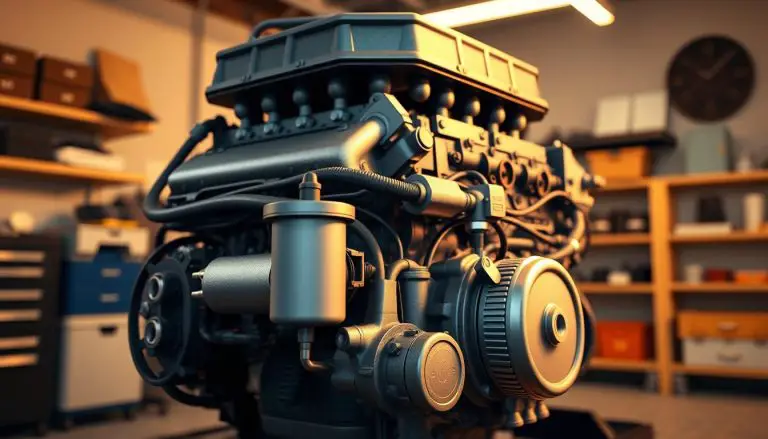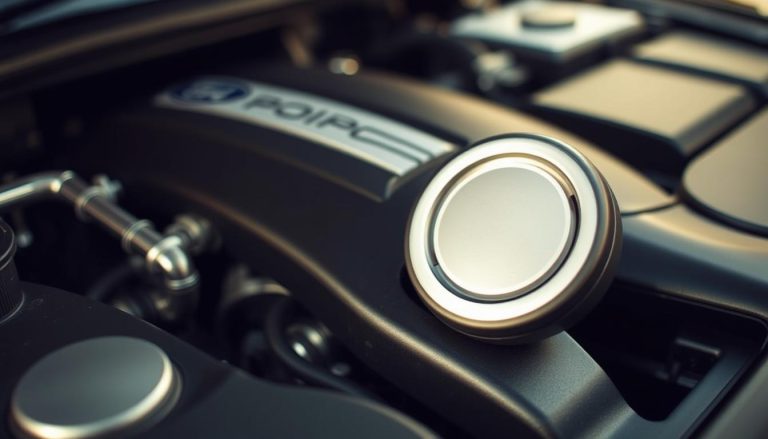Ford Certified Pre-Owned vehicles go beyond standard resale checks. Each car passes a rigorous, technician-led 172-point inspection that screens mechanical systems, safety items, and appearance. This process helps buyers spot dependable vehicles with documented history.
The program pairs inspection results with tangible protections. Every vehicle includes a 12-month/12,000-mile Comprehensive Limited Warranty and a 7-year/100,000-mile Powertrain Limited Warranty. Roadside assistance runs 24/7 and covers towing, fuel delivery, lockouts, and other emergency support.
Ford Blue Advantage adds choice: Gold Certified, EV Certified, and Blue Certified tiers. EV models gain BaseCARE electric coverage and longer battery-related safeguards. All certified cars include a free CARFAX report, a 14-day/1,000-mile money-back guarantee, and FordPass Rewards Points.
In short: buyers get verified condition, clear documentation, warranty coverage, and extra services that deliver real peace of mind during ownership.
Key Takeaways
- Certification means a strict 172-point inspection and verified history.
- Comprehensive and powertrain warranties provide layered coverage.
- 24/7 roadside assistance and CARFAX reports boost buyer confidence.
- Blue Advantage tiers match age, mileage, and budget needs.
- EV Certified vehicles include BaseCARE battery protection.
- 14-day return and FordPass Rewards add extra buyer value.
Buyer’s Guide Overview: How Ford Certified Pre‑Owned Gives You Peace of Mind
Certification turns an uncertain used-car purchase into a documented, warranty-backed transaction. A clear inspection record, fixed warranty windows, and emergency support reduce surprise costs and make ownership predictable.
The core protections include a 12-month/12,000-mile Comprehensive Limited Warranty and a 7-year/100,000-mile Powertrain Limited Warranty measured from the original in‑service date. These warranty coverage periods start immediately after purchase and limit out-of-pocket repairs.
- Standardized inspection: uniform checks that confirm condition and document issues.
- Roadside assistance: 24/7 help such as towing to the nearest dealer, jump starts, flat changes, lockout aid, fuel delivery, and eligible travel expense reimbursement.
- Blue Advantage extras: 14-day/1,000-mile money-back guarantee plus FordPass Rewards Points for early maintenance (22,000 for Gold/EV; 11,000 for Blue).
Use this guide as a simple roadmap. Ask dealers for the inspection checklist and CARFAX report, confirm warranty start dates, and verify which service items the vehicle still qualifies for. Those steps build confidence and help control unexpected repair costs.
“Buyers who verify documentation and warranty terms spend less time worrying and more time driving.”
What Does It Mean for a Used Ford to Be “Certified Pre‑Owned”?
Certification shows a ford certified model met clear standards before sale. Typical eligibility limits list models up to years old and under miles; in practice that means most candidates are up to 6 years old with fewer than 80,000 miles.
Eligibility at a glance: years old and miles requirements
At a glance, age and odometer caps keep inventory recent and reliable. Dealers screen service and ownership history before any further checks.
The rigorous 172‑point inspection and who performs it
Ford factory-trained technicians run the rigorous 172-point inspection. That checklist covers safety, powertrain, electrical systems, and comfort features. A road test confirms drivability and noise or handling issues.
What’s verified before sale: title status and reconditioning with genuine parts
Title status must be clean and history checks must show no major damage. When repairs are needed, technicians use genuine Ford parts. Documentation of findings and replacements accompanies the sale.
- After passing inspection, the certified vehicle comes with Comprehensive and Powertrain warranty coverage plus roadside assistance.
Understanding Ford Blue Advantage Tiers: Gold, EV, and Blue Certified
Blue Advantage organizes certified inventory into three tiers so buyers match cost, coverage, and inspection depth.
Gold Certified
Gold certified applies to Ford models up to 6 years old and under less 80,000 miles. These vehicles undergo the full 172-point inspection.
Gold cars include a 12-month 12,000-mile Comprehensive Limited Warranty plus a 7-year/100,000-mile powertrain limited warranty. Perks include a 14-day/1,000-mile return window and 22,000 FordPass Rewards Points.
EV Certified
EV certified covers electric models up to 6 years old and under less 80,000 miles. Technicians run a 127-point inspection tailored to electric systems.
Coverage pairs the 12/12 Comprehensive Limited with an 8-year/100,000-mile BaseCARE EV warranty. Roadside assistance and the same 14-day return apply.
Blue Certified
Blue certified accepts any make up to 10 years old and up to 150,000 miles. The inspection is 139 points, and the Comprehensive Limited Warranty runs 90 days/4,000 miles.
At-a-glance differences
| Tier | Age / Miles | Inspection | Key Warranty / Rewards |
|---|---|---|---|
| Gold Certified | Up to 6 years old / less 80,000 miles | 172-point | 12-month 12,000-mile + 7-year/100,000 powertrain limited; 22,000 points |
| EV Certified | Up to 6 years old / less 80,000 miles | 127-point (EV focus) | 12/12 + 8-year/100,000 BaseCARE EV; 22,000 points |
| Blue Certified | Up to 10 years / up to 150,000 miles | 139-point | 90-day/4,000-mile Comprehensive; 11,000 points |
Tip: Choose a tier that matches desired warranty length, inspection depth, and budget. All tiers include transparent inspection documentation and a CARFAX report for added confidence.
Warranty Coverage Breakdown: Comprehensive Limited, Powertrain Limited, and EV Protection
Clear warranty terms turn uncertain repairs into predictable expenses for new owners. Below is a concise breakdown of what each warranty covers and how roadside support and the return window work.

12‑month/12,000‑mile Comprehensive Limited overview
The comprehensive limited warranty protects over 1,000 components for the first 12 months or 12,000 miles. It mirrors many new-vehicle protections, covering electronics, comfort features, and non-powertrain systems.
7‑year/100,000‑mile Powertrain Limited scope
The powertrain limited warranty runs 7 years or 100,000 miles from the original in‑service date. It covers the engine, transmission, and drivetrain parts that keep the vehicle moving.
EV BaseCARE 8‑year/100,000‑mile protection
EV Certified vehicles gain an 8‑year/100,000‑mile BaseCARE limited warranty. That policy focuses on battery and electric-drive components and supplements the shorter comprehensive limited term.
Roadside assistance and durations by tier
Roadside services start immediately and include towing to the nearest dealer, flat-tire help, jump starts, lockout service, and fuel delivery. If a breakdown occurs more than 100 miles from home, travel reimbursement up to $500 is available for up to three days.
14‑day/1,000‑mile money‑back guarantee
The return window allows returns within 14 days or 1,000 miles if the vehicle is in substantially the same condition. Normal wear is excluded, liens are not permitted, and original trade-ins are not returned. Restrictions apply, so verify terms at sale.
“Always confirm coverage start and end dates on the buyer order and warranty documents to avoid surprises.”
Inspection Depth: What the 172‑Point (and 139‑/127‑Point) Inspections Actually Cover
A structured inspection and road test reveal NVH, handling, and brake performance that visual checks miss.
Mechanical systems checked
The checklist examines engine compression and performance, transmission shift quality, and drivetrain operation.
Technicians also assess brake pad and rotor wear, steering feel, and suspension integrity to confirm safe service life.
Safety, electrical, HVAC, tires, and road test
Inspectors verify airbags, seatbelts, lighting, battery and charging systems, infotainment, and driver‑assist functions.
HVAC tests confirm heating, cooling, defrosting, and cabin air flow. Tire tread depth, wear patterns, and alignment get measured.
The road test validates noise, vibration, harshness (NVH), handling, braking performance, and overall drivability.
Inspection tiers
- 172‑point: full factory checklist used for Gold vehicles.
- 139‑point: Blue tier checks key systems for older inventory.
- 127‑point: EV focus with high‑voltage and battery system tests.
“Any failed item is repaired with genuine parts and re-verified before certification.”
| Inspection | Focus | Typical use |
|---|---|---|
| 172‑point | Powertrain, brakes, steering, suspension, electrical, HVAC, road test | Gold tier vehicles up to specific years and miles |
| 139‑point | Core mechanical and safety systems, visual checks | Blue tier broader eligibility |
| 127‑point | EV high‑voltage systems, battery, electric drive | EV Certified inventory |
Tip: Request the completed inspection checklist during the test drive to confirm repairs, parts used, and any recommended service.
Vehicle History and Transparency: CARFAX Vehicle History Report and Documentation
A full history report and a dealer inspection act as companion records that reveal both past issues and recent repairs.

What’s included in the CARFAX vehicle history report
Every Blue Advantage vehicle ships with a free CARFAX Vehicle History Report. The report lists ownership changes, accident and damage records, title brand checks, service entries, mileage readings, and open recalls when available.
How the report and inspection checklist work together
Dealers also provide the technician’s inspection checklist. That document shows items inspected, repairs made, and genuine parts used during reconditioning.
- Use both documents to confirm consistent mileage and absence of title brands.
- Check maintenance entries and ask about gaps or anomalies on the history report.
- Confirm recall remedies are completed before purchase to ensure full coverage.
“Clean history plus a passed inspection strengthens resale value and buyer confidence.”
How to Shop a Ford Certified Pre‑Owned Vehicle and Maximize Benefits
Start shopping by verifying the vehicle’s certification tier, odometer reading, and original in‑service date on the buyer’s order. That lets you track when each warranty window begins and ends.
Confirm certification, miles, and warranty dates
Ask the salesperson to show proof of the tier on the window label and on paperwork. Note the odometer and record the in‑service date.
Record the Comprehensive and Powertrain start and end dates, and include BaseCARE EV if relevant.
Redeem FordPass Rewards for early maintenance
Enroll in FordPass and claim included points. Gold and EV tiers include 22,000 points for the first visits; Blue gives 11,000 points.
Use points toward covered maintenance to lower immediate costs and preserve value.
Service at authorized centers and keep records
Always use authorized service centers to protect warranty coverage. Keep every receipt and repair order.
Those documents speed any claim and help future resale.
Consider extended coverage
Review Ford Protect plans like PremiumCARE, ExtraCARE, BaseCARE, and PowertrainCARE to extend years and miles—some plans reach 10 years or 175,000 miles.
“Verify certification tier and warranty start dates on the buyer order to avoid surprises.”
For a deeper breakdown of warranty coverage and benefits consult this complete warranty guide.
Conclusion
A certified pre-owned vehicle combines a rigorous 172-point inspection with layered protections that reduce ownership risk.
Blue Advantage tiers—gold certified, EV, and Blue—match age, mileage, and desired coverage. Key protections include the 12-month 12,000-mile comprehensive limited warranty, the 7-year/100,000-mile powertrain limited, or EV BaseCARE 8-year/100,000-mile battery coverage.
Buyers also get 24/7 roadside assistance, a CARFAX vehicle history report, and a 14-day/1,000-mile return window. Use FordPass Rewards and consider Ford Protect plans to extend savings and peace of mind.
Bottom line: a ford certified pre-owned choice delivers documented condition, real warranty coverage, and practical benefits that balance price and long-term confidence.
FAQ
What qualifies a pre-owned Ford for certification?
A vehicle must meet specific age and mileage limits, pass a rigorous inspection, and have a clean title. Gold Certified Ford vehicles are typically up to six years old and under 80,000 miles. EV Certified and Blue Certified tiers have their own age, mileage, and inspection standards.
How rigorous is the 172-point inspection?
The 172-point inspection checks mechanical, electrical, safety, and cosmetic systems. Factory-trained technicians at authorized Ford service centers perform the work using genuine Ford parts when reconditioning is required.
What does Ford verify before offering a certified vehicle for sale?
Ford confirms title status, service history, and past damage through a CARFAX vehicle history report. Any required repairs are completed with Ford-approved parts, and the vehicle receives final road-test verification.
How do Ford Blue Advantage tiers differ?
Gold Certified focuses on late-model Fords with the strictest standards. EV Certified covers electric vehicles with a 127-point inspection and EV-specific warranty. Blue Certified accepts a wider range of makes/models with a 139-point inspection and broader eligibility.
What warranty coverage comes with Gold Certified vehicles?
Gold Certified cars typically include a 12-month/12,000-mile Comprehensive Limited Warranty plus a 7-year/100,000-mile Powertrain Limited Warranty. Benefits also include roadside assistance and a 14-day/1,000-mile money-back guarantee in many cases.
What protection exists for Ford electric vehicles?
EV Certified vehicles receive a 127-point inspection and EV BaseCARE coverage, commonly offering up to 8 years/100,000 miles for high-voltage components, plus standard roadside assistance and service support specific to EV systems.
How long does roadside assistance last with certified coverage?
Roadside assistance duration varies by tier, but certified vehicles generally include at least one year of 24/7 roadside support. Specific terms depend on the certification level and warranty start date.
What do the inspection point counts (172, 139, 127) actually cover?
Those counts reflect inspection depth. They cover mechanical systems (engine, transmission, drivetrain), brakes, steering, suspension, safety features, electrical systems, HVAC, tires, and a road test to verify performance.
What information appears on the CARFAX vehicle history report?
CARFAX typically shows title records, reported accidents, service and maintenance history, previous owners, odometer readings, and any branded titles. Dealers provide this report so buyers can compare history to the inspection findings.
How should I verify certification status when shopping?
Confirm the certification tier, review the CARFAX report, check warranty start dates and remaining coverage, and request the inspection checklist. Verify all service was done at authorized centers and ask for documentation of parts used.
Can I use FordPass Rewards on maintenance for a certified vehicle?
Yes. FordPass Rewards points can often be applied to maintenance and service visits at participating Ford dealerships, helping lower ownership costs and keeping records that support warranty claims.
Is extended coverage available after the factory certified warranty ends?
Yes. Ford Protect extended plans can add powertrain, comprehensive, and EV-specific protection beyond factory limits. Review plan terms to match desired duration and mileage for continued peace of mind.
What are the money-back guarantee terms for certified vehicles?
Many certified Ford programs offer a 14-day or 1,000-mile return window. Conditions vary by dealer and certification tier, so verify the exact parameters and any restocking or mileage restrictions before purchase.


